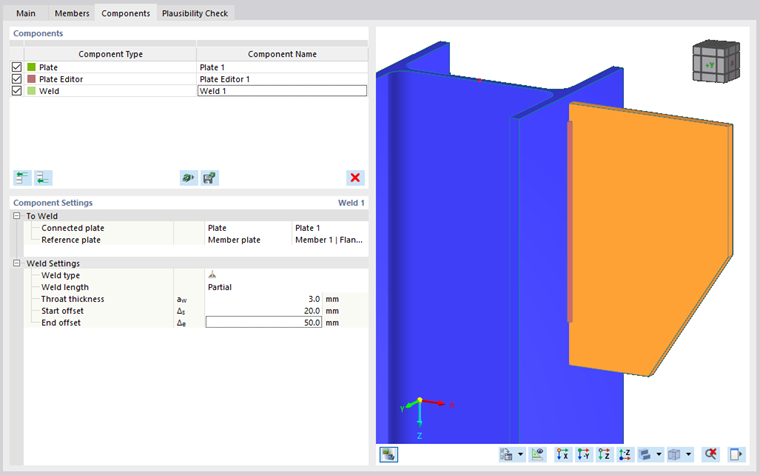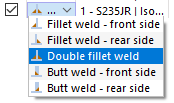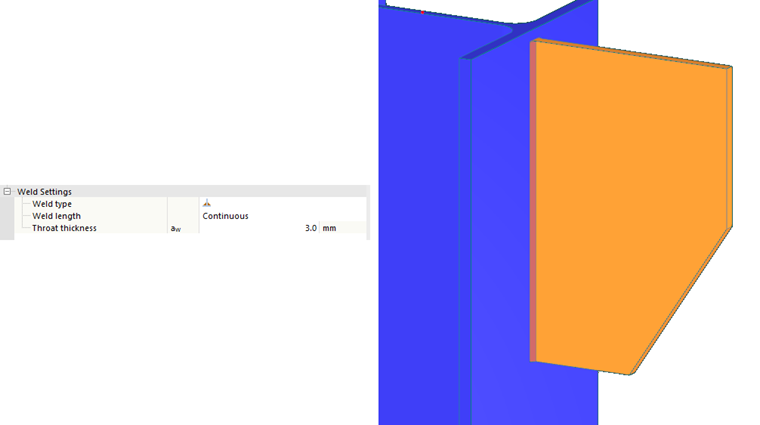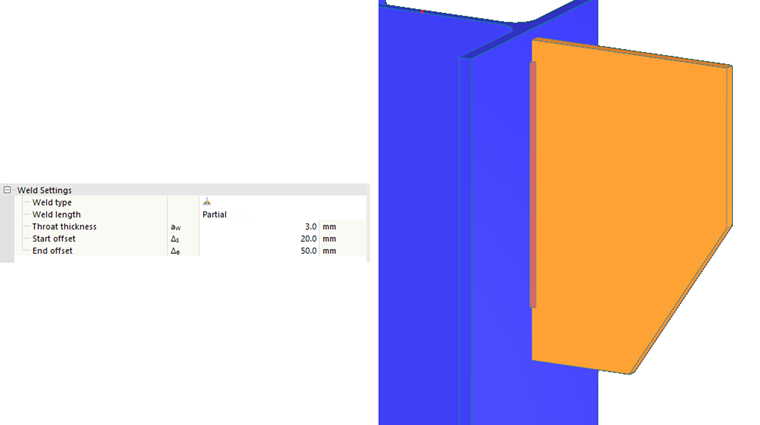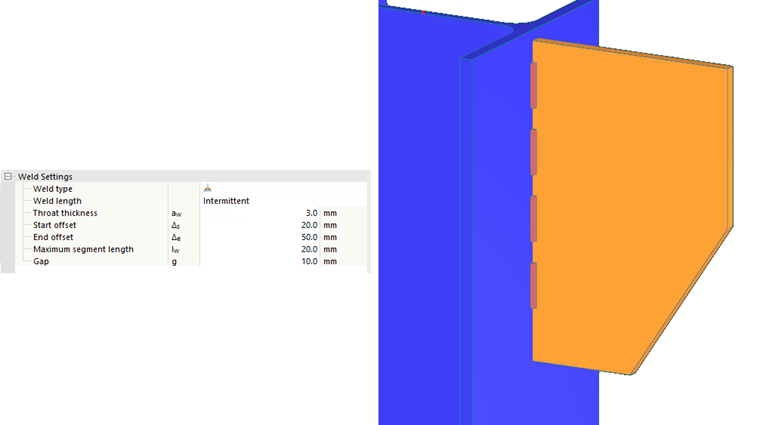Some of the components such as Plate cut, Fin plate, End plate, and so on, have the definition of the weld included. However, you can also use a separate component, Weld, to connect two general plates. Weld connects a plate or a member plate to another plate, both of which are already present in the structure.
To Weld
First of all, you have to define the plate you want to connect. It can be a plate or a member plate. Then you define the reference plate – the plate to which the connected plate should be welded. The reference plate can, again, be a plate or a member plate.
Weld Settings
The second input category starts with the Weld type. Here you can choose between a fillet weld or a butt weld and the location of the weld – front side or rear side.
Unlike the welds in other components, the Weld component is extended by other modifications, such as weld fabrication over its length. The possibilities are Continuous, Partial, and Intermittent.
For the Continuous option, the weld is performed over the entire available length of the contact of the connected plates. The only input parameter is the weld throat thickness.
The Partial weld is not performed over the entire available length of the contact; it has a start offset and an end offset. Therefore, the parameters for defining the partial weld are the throat thickness and the offsets measured from the available weld length.
The Intermittent weld type is not continuous like the previous two types; the weld is split into weld segments. The parameters needed for the weld definition are throat thickness, start and end offsets, the maximum segment length, and the gap length. All these parameters are of an exact value except for the segment length. The actual segment length is the same for all the segments and it is calculated on the basis of the available weld length reduced by the offsets.
